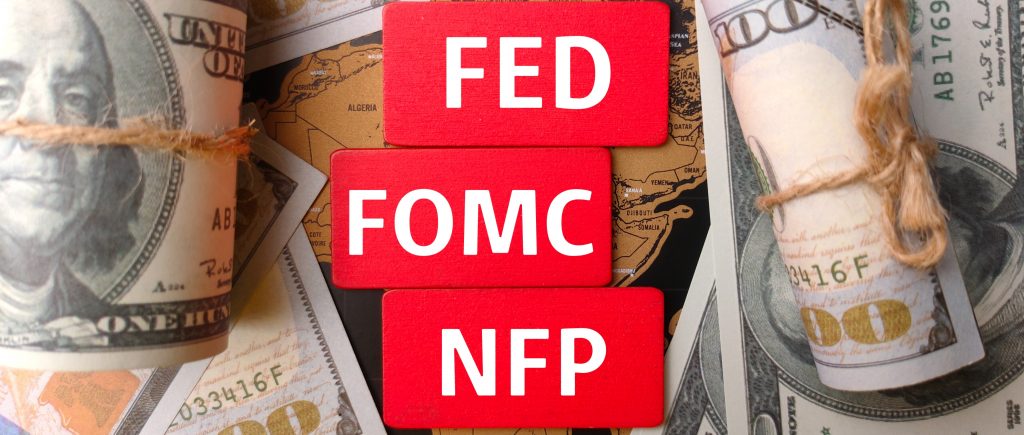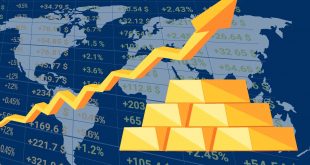The US central bank will announce its monetary policy decision on Wednesday, June 15. As markets get closer to the release time, twelve major banks published their forcasts.
The Federal Reserve is the world’s most powerful central bank and is expected to go off-script through hiking rate by up to 75 basis points in June.
UOB
“Given the clear indications for ongoing hikes to combat inflation spelled out in the May FOMC minutes but no intentions of cranking up the size of the hikes, we are comfortable maintaining our FFTR forecast for another 50 bps each in the Jun and July FOMC. We continue to expect 25 bps in every remaining meeting of this year. This will bring the FFTR higher to the range of 2.50-2.75% by end of 2022, a range largely viewed as the range for neutral stance.”
Westpac
“The second of three consecutive 50 bps increases in the fed funds rate is expected to be delivered, taking the cash rate to 1.375%, on the way to 1.875% in July. These moves have been well telegraphed by the Committee. What comes next is less certain, however, and is likely to be the focus of questioning by the journalists at Chair Powell’s post-meeting press conference. We are likely to see a more balanced assessment of the risks pertaining to inflation and growth through Q3, culminating in the throttling back of rate hikes to a 25 bps pace from September. This shift will be all the more apparent in Q4 as the FOMC ends the tightening cycle at 2.625% in December.”
ANZ
“We expect the Fed will raise rates by 50 bps and reiterate guidance that it intends to return rates to neutral quickly. We also expect it to maintain its guidance that rates will rise by 50 bps in July to 2.0%. The Fed will remain open to raising rates by 50 bps in September, with post-summer policy moves contingent on inflation and labour market data. We maintain our target of 3.75% fed funds by mid-2023. We expect the Fed to lower its 2022 GDP forecast and make a modest upward revision to its 2022 and 2023 inflation profiles. The median fed funds profile over the forecast horizon is set to move higher.”
TDS
“We are now looking for the Fed to lift rates by 75 bps despite giving clear prior guidance of 50 bps increases for the June and July FOMC. According to media outlets (highly unusual for the Fed), the FOMC is now leaning toward a more front-loaded hiking cycle after another hot CPI and inflation expectations showing signs of de-anchoring. We believe this shows the Fed is more determined to do what it takes to end the inflation overshoot as rapidly as possible even if that raises the chance of a hard landing in 2023. We also expect the Fed to tighten policy by 75 bps in July and then, after reaching neutral, to slow the pace to 50 bps in September and November. We pencil in two further 25 bps increases for the December and February meetings to reach a terminal rate of at least 3.75%-4.00%.”
Danske Bank
“We expect the Fed to hike by another 50 bps and signal that at least one more 50 bps rate hike is likely in July. With still high underlying inflation pressure and high labour demand, risk is skewed towards the Fed signalling that more 50 bps is needed, not least after Fed’s Waller opened the door for continuing with larger 50 bps rate hikes in the autumn.”
NBF
“The Fed is all but guaranteed to deliver a second consecutive 50 bps rate hike, bringing the target range for the federal funds rate to 1.25%-1.50%. We’ll be looking for the Fed and Chair Powell to guide markets towards another 50 bps hike at the subsequent July meeting.
“Thereafter the trajectory becomes less clear. Fortunately, we’re also set to receive fresh guidance on the medium-term policy path as the FOMC is set to release an updated Summary of Economic Projections. As a reminder, the Fed’s previous dot plot (released in March) signaled an expected fed funds target of 1.75%-2% in December. That’s surely to rise but the question is by how much. The market is priced for a 3% policy rate target by year-end, while we’re looking for a slightly less aggressive 2.5%.”
RBC Economics
“The Fed is widely expected to hike its target rate by another 50 bps, taking it into the 1% range. And it’s not done yet. We expect another 50 bps hike at the next meeting in July on the way up to a 2.75% to 3% range by the end of the year. Slower growth in the economy is expected to follow against the risk that more aggressive rate hikes than we expect will be needed to tame inflation pressures that continue to stoke recession fears. Markets will be watching updated policy rate expectations from FOMC members. As of March, most members did not expect to hike rates above 3%, but that share likely moved higher.”
ING
“The Fed is widely expected to raise interest rates by 50 bps and confirm that a further 50 bps hike in July is the most likely path ahead. However, there is a debate as to what happens after July. We remain optimistic about near-term growth and we also think inflation will be sticky given ongoing geopolitical strife, supply chain issues, and labour market shortages. As such, a September hike is still our base case, but there is a growing chance the Bank switches to 25 bps moves at that meeting and beyond. We expect the Fed funds rate to peak at around 3% in early 2023.”
CIBC
“The funds rate is far enough below its final destination that the Fed could opt for a 75 bps move, but we favour a 50 bps hike as more likely given the risks of a financial market overreaction to a larger move.”
ABN Amro
“We expect the Fed to deliver its second 50 bps rate hike, taking the target range for the fed funds rate to 1.25-1.50%. However, we also see a significant risk that the Fed makes an even bigger move in rates of 75 bps, given the upside surprise in the May CPI reading on Friday. We expect month-on-month inflation readings to remain far above the Fed’s target over the coming months, and somewhat above target later in the year, and this should keep the Fed hiking at a 50 bps pace for all remaining meetings of 2022, and likely once more in 2023. We expect the upper bound of the fed funds rate to peak at 4% by February. We suspect the median projected peak in the fed funds rate will fall somewhat short of our expectation of 4%, but be well above the current consensus expectation, i.e. perhaps signalling an upper bound of 3.75%. Should the Committee deliver a 75 bps hike, it is possible that its projected peak might be even higher than our new base case.
“At the press conference, we expect Chair Powell to continue to be incrementally more hawkish in the face of the mounting inflation challenge, perhaps flagging the risk to markets that the Fed has to move even more aggressively than the June projections might suggest. We also expect him to continue to emphasize the priority the Fed places on achieving price stability, even if this comes at the expense of a near-term rise in unemployment. The Fed will want to ensure there is no doubt among market participants over its resolve to fight inflation.”
Nordea
“We change our Fed call to include a 75 bps hike. Rate markets are prepared for such a message but stock markets could have more downside in store for them. Higher USD rates and more risk-off will be in favour of the USD, which could strengthen somewhat more against the other G10 currencies. However, if the Fed does not hike by 75 bps on Wednesday rates will fall, stock should rally and the USD will likely weaken against most G10 currencies.”
Commerzbank
“The Fed is likely to raise its key interest rate by 50 bps, as it did at its last meeting. we continue to expect the Fed to raise key rates by 50 bps in September as well, moving to smaller steps of 25 bps only thereafter. In spring 2023, the key rate would then be 3.50%.”
 Noor Trends News, Technical Analysis, Educational Tools and Recommendations
Noor Trends News, Technical Analysis, Educational Tools and Recommendations





